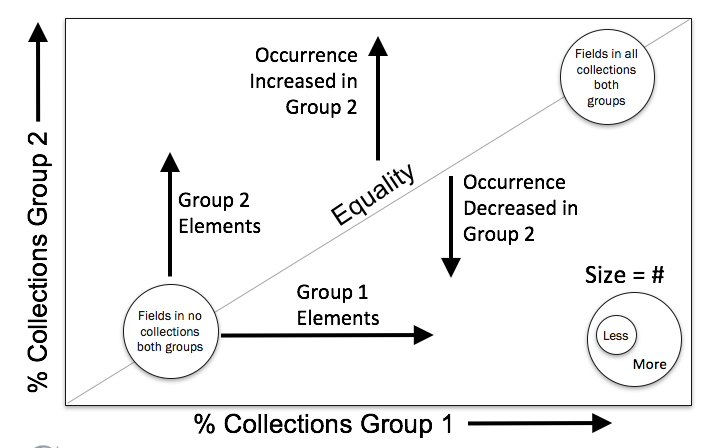Page History
Overview
The CMR includes metadata that originate in three dialects: DIF, ECHO, and ISO. The largest portion of CMR collection records are in the SciOps collection, and are inserted into the CMR in DIF format. The second largest portion of metadata for NASA collections originate from ECHO and are inserted into the CMR in ECHO format. These are referred to here as the NASA collection. A third group of metadata in the CMR originate from other agencies around the world and are generally either in DIF or possibly in ISO. These are referred to as the Other collection. The focus of this evaluation is NASA metadata collections.
The The purpose of this evaluation is compare the usage of elements in NASA 2016 metadata collections with NASA 2017 metadata collections in order to identify and visualize how NASA metadata collections are evolving over time.
Data Selection
...
The table below shows the collections included in this evaluation as well as the record count for each collection.
Table 1. Collections and record counts
...
- GSFCS4PA 2016 records were moved to the GES_DISC collection in 2017
- NSIDC_V0 and SEDAC were not included in the 2016 analysis
NASA 2016 vs NASA 2017
This analysis compares element usage in 17 NASA 2016 collection with element usage in 18 2017 collections. This evaluation identifies elements which exist in collections. In order for an elements to exist in a collection it must be present in at least 1 metadata record included in the collection. Element usage for NASA 2016 collections and NASA 2017 collections is shown below using bubble charts. The bubble chart interpretation graphic provides a schematic for interpreting the bubble plots.
...
Bubble Chart Interpretation
NASA 2016 Exists vs NASA 2017 Exists
...
Four elements exist in all NASA 2016 Collections and in a smaller number of NASA 2017 collections. These elements are shown as three bubbles along the right edge of the chart. See the All 2016 and Some 2017 filtered view to identify these elements.
...
Five elements exist in all NASA 2017 Collections and in a smaller number of NASA 2016 collections. These elements are shown as a purple bubble on the top edge of the chart. See the All 2017 and Some 2016 filtered view to identify these elements.
...
Twenty-one elements exist in some NASA 2016 Collections and in no NASA 2017 collections. These elements are shown as bubbles along the lower edge of the chart. See the Some 2016 and None 2017 filtered view to identify these elements.
...
Forty-eight elements exist in some NASA 2017 Collections and in no NASA 2016 collections. These elements are shown as bubbles along the left edge of the chart. See the Some 2017 and None 2016 filtered view to identify these elements.
...
